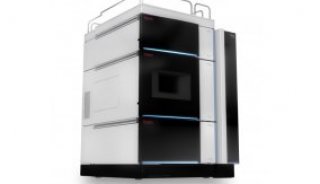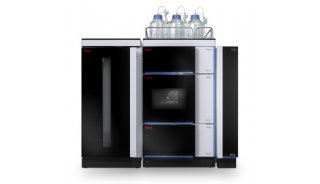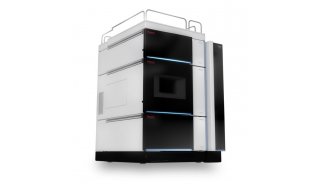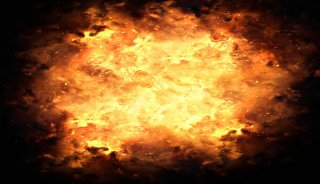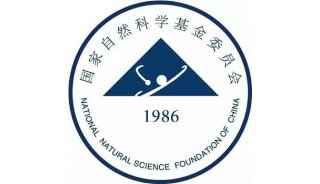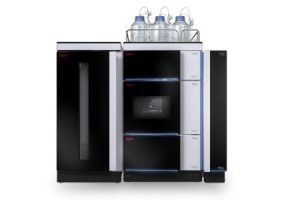7日直播|青年科学家奖专题分享会
原文地址:http://news.sciencenet.cn/htmlnews/2023/4/497975.shtm
直播时间:2023年4月7日(周五)20:00-21:30
直播平台:
科学网APP
(直播间链接)

科学网微博

科学网视频
北京时间2023年号4月7日晚八点,iCANX Talks 第138期将在iCANX平台上线!本期我们邀请到西安电子科技大学 Rusen Yang 教授、加拿大女王大学 Bhavin J. Shastri 教授两位嘉宾进行分享!更多精彩,敬请期待!
【直播介绍】
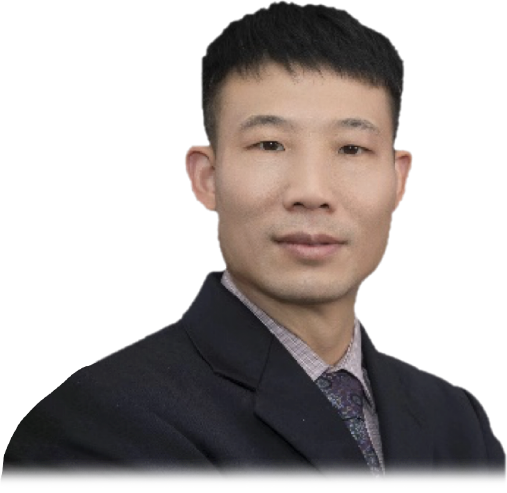
Rusen Yang
Xidian University
F Biomimetic peptide self-assembly for functional materials and novel applications
【Abstract】
Supramolecular assembly of metabolites produces novel materials with hierarchical structures, good biological properties, and unique physical properties. They are an essential biomimetic material, and self-assembly structures with excellent piezoelectric properties enable the study of the electromechanical coupling properties in biomaterials.
具有多层次有序结构、良好生物学特性和独特物理性质的代谢物自组装材料是一种重要的仿生材料,具有优异压电性质的自组装材料也为研究生物材料的机电特性提供了一种可能。
However, the randomly oriented piezoelectric domains adversely affect the performance of piezoelectric biomaterials, and uniform polarization is needed for the material to show a macroscopic piezoelectric effect and to improve the performance of a piezoelectric device. We combine theoretical calculations and experimental studies to synthesize piezoelectric biomaterials based on amino acid and peptide self-assembly.
随机取向的电畴无法极化严重影响了压电生物材料的性能,而压电材料需要有取向一致的电畴才具有优异的宏观压电性能并制备器件。我们结合理论计算和实验研究基于氨基酸和肽自组装合成许多压电生物材料。
We applied an electric field during the growth process to synthesize micron column arrays with controlled spontaneous polarization directions. We then studied the influence of the electric field on self-assembly. Our calculations showed that peptide-based piezoelectric materials outperform traditional piezoelectric ceramics in energy harvesting applications. We developed metabolite-based piezoelectric nanogenerators, composite nanogenerators, and flexible nanogenerators.
我们在生长过程中施加电场合成出自发极化方向和施加的电场方向一致的微米柱阵列,并进而研究了电场对自组装的影响规律。理论计算表明肽基压电材料比传统的压电陶瓷机电转换性能更优,于是我们研制了压电式纳米发电机、复合纳米发电机和柔性纳米发电机,并且揭示了肽基纳米发电机在不同溶液中的降解行为。
We also revealed the degradation behavior of peptide-based nanogenerators in different solutions. The research of peptide self-assembly materials has strongly promoted the discovery of environmentally friendly biomimetic functional materials and the advancement of new energy, advanced sensing, and other technologies, improving and enhancing peoples health and quality of life.
肽自组装材料的研究有力推动环境友好仿生功能材料的发现和新能源、先进传感等技术的进步,从而改善和提高人们的健康和生活质量。
【BIOGRAPHY】
Dr. Rusen Yang is a Hua Shan professor and vice dean of the School of Advanced Materials and Nanotechnology at Xidian University in China. He obtained his M.S. and B.S. in Condensed Matter Physics from Jilin University, China. In 2007, he received his Ph.D. degree in Materials Science and Engineering from Georgia Institute of Technology, where he continued as a Post-Doctoral Associate till 2010.
杨如森,“华山学者”特聘教授,西安电子科技大学先进材料与纳米科技学院副院长。他在吉林大学获得凝聚态物理学硕士和学士学位,2007年在美国佐治亚理工学院获博士学位,并继续从事博士后研究3年。
From 2010 to 2018, he worked as an assistant professor in the Department of Mechanical Engineering at the University of Minnesota, where he was elected as a McKnight Land Grant Professor in 2013. He has focused his research on synthesizing new nanomaterials and exploring their application for energy harvesting and sensing applications. He has developed new processes to achieve nanowires with controlled orientation and post-growth approaches to align nanostructures.
2010年起他在明尼苏达大学机械工程系担任助理教授,并于2013年获得麦克奈特土地授予教授称号。他长期从事新型纳米材料合成及其能量收集和先进传感应用,开发了新工艺来实现具有受控取向的纳米线和生长后方法来排列纳米结构。
He has created piezoelectric biomaterials with controlled polarization and applied them for energy harvesting. He has published over 150 papers in peer-reviewed journals that have been cited over 12,000 times, and his transformative work won him NSF Career Award, 3M NTFA Award, and Nano Energy Award. His currently a Fellow of the Royal Society of Chemistry (FRSC) and a Deputy Editor of Research.
用平置纳米线开辟了纳米发电机的一个新方向,首次制备极性可控肽自组装压电生物材料,率先制备肽基能量收集器件,开发出比传统传感器敏感近百倍的高性能传感器,在Science, Nature Nanotechnology等国际期刊报道发表150多篇论文,这些工作已经被引用12,000多次。他的研究获得了许多奖项的认可,包括美国3M公司青年教授奖,美国国家科学基金会NSF CAREER Award和纳米能源领域有声望的“Nano Energy Award”。他目前是英国皇家化学会会士,Science首个合作期刊Research的Deputy Editor.

Bhavin J. Shastri
Queen’s University
Neuromorphic Silicon Photonics and Applications from Classical to Quantum
【Abstract】
Artificial intelligence (AI) powered by neural networks has enabled applications in many fields (medicine, finance, autonomous vehicles). Digital implementations of neural networks are limited in speed and energy efficiency. Neuromorphic photonics aims to build processors that use light and photonic device physics to mimic neurons and synapses in the brain for distributed and parallel processing while offering sub-nanosecond latencies and extending the domain of AI and neuromorphic computing applications.
由神经网络驱动的人工智能(AI)已经在许多领域(医疗、金融、自动驾驶汽车)获得了应用。神经网络的数字实现在速度和能源效率方面受到了限制。神经形态光子学旨在构建利用光和光子器件物理模拟大脑中的神经元和突触进行分布式和并行处理的处理器,同时提供亚纳秒的延迟,并扩展人工智能和神经形态计算应用的领域。
We will discuss photonic neural networks enabled by CMOS-compatible silicon photonics. We will highlight applications that require low latency and high bandwidth, including wideband radio-frequency signal processing, fiber-optic communications, and nonlinear programming (solving optimization problems). We will briefly introduce a quantum photonic neural network that can learn to act as near-perfect components of quantum technologies and discuss the role of weak nonlinearities.
我们将讨论由CMOS兼容硅光子赋能的光子神经网络。我们将重点介绍需要低延迟和高带宽的应用程序,包括宽带射频信号处理、光纤通信和非线性规划(解决优化问题)。我们将简要介绍一个量子光子神经网络,它可以学习成为量子技术的近乎完美的成分,并讨论弱非线性的作用。
【BIOGRAPHY】
Prof. Bhavin J. Shastri is an Assistant Professor of Engineering Physics at Queen’s University and a Faculty Affiliate at the Vector Institute. He was a Banting Postdoctoral Fellow at Princeton University. He received a Ph.D. in electrical engineering (photonics) from McGill University in 2012. Dr. Shastri is the recipient of the 2022 SPIE Early Career Achievement Award and the 2020 IUPAP Young Scientist Prize in Optics "for his pioneering contributions to neuromorphic photonics" from the ICO.
Bhavin J.Shastri是女王大学工程物理助理教授,也是矢量研究所的附属教授。他是普林斯顿大学的班廷博士后研究员。2012年,他获得了麦吉尔大学的电气工程(光子学)博士学位。“因为他对神经形态光子学的开创性贡献”,他是2022年SPIE早期职业成就奖和2020年IUPAP青年科学家光学奖的获得者。
He is a co-author of the book Neuromorphic Photonics, a term he helped coin. He has published more than 90 journal articles and 110 conference proceedings, 7 book chapters, and given over 90 invited talks, including 5 keynotes and 5 tutorials. Dr. Shastri is a Senior Member of Optica and IEEE.
他是《神经形态光子学》(Neuromorphic Photonics)一书的合著者,这是他帮助创造的一个术语。他发表了90多篇期刊文章和110篇会议记录、7个图书章节,并发表了90多次受邀演讲,其中包括5篇主题演讲和5篇教程。它是Optica和IEEE的高级成员。
【嘉宾介绍】








